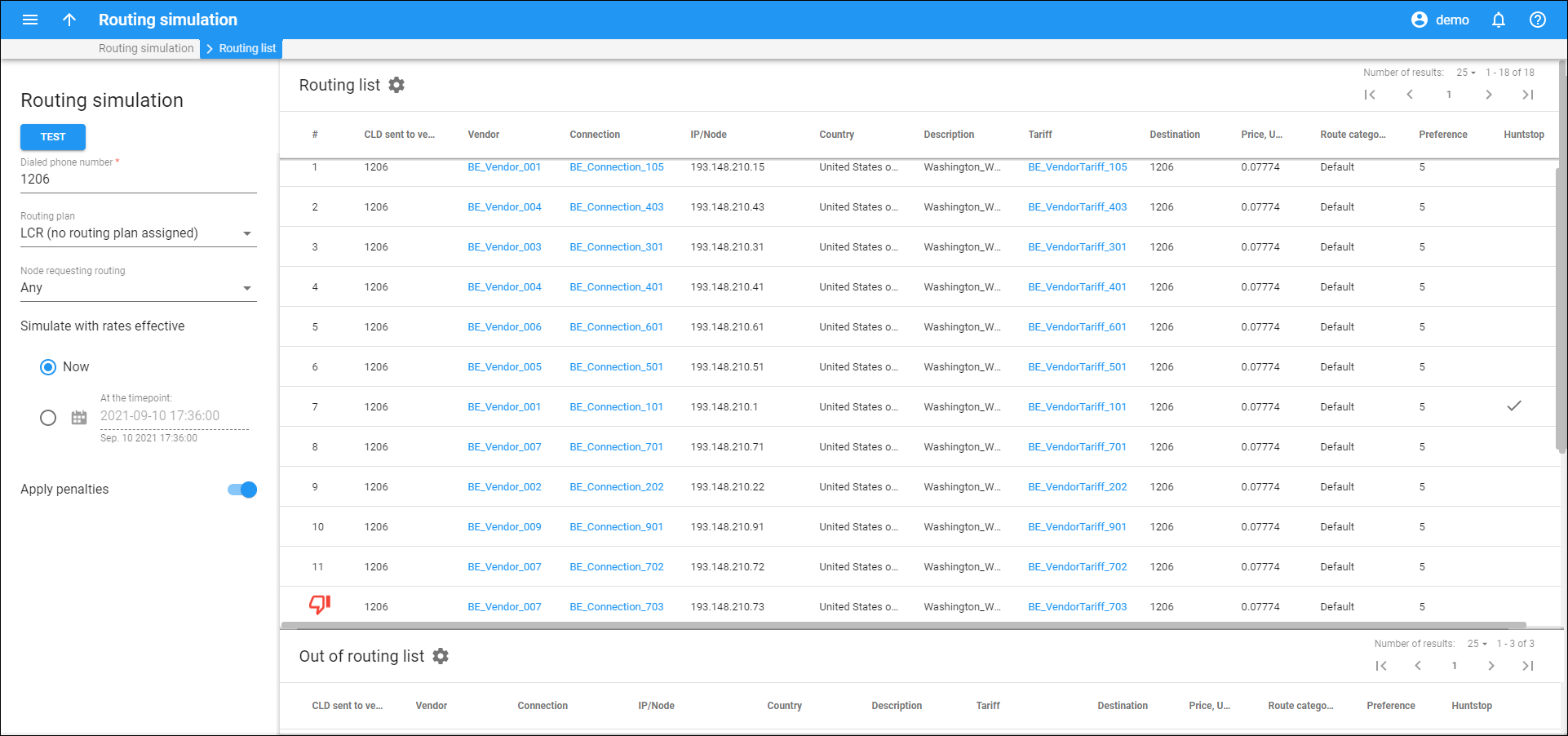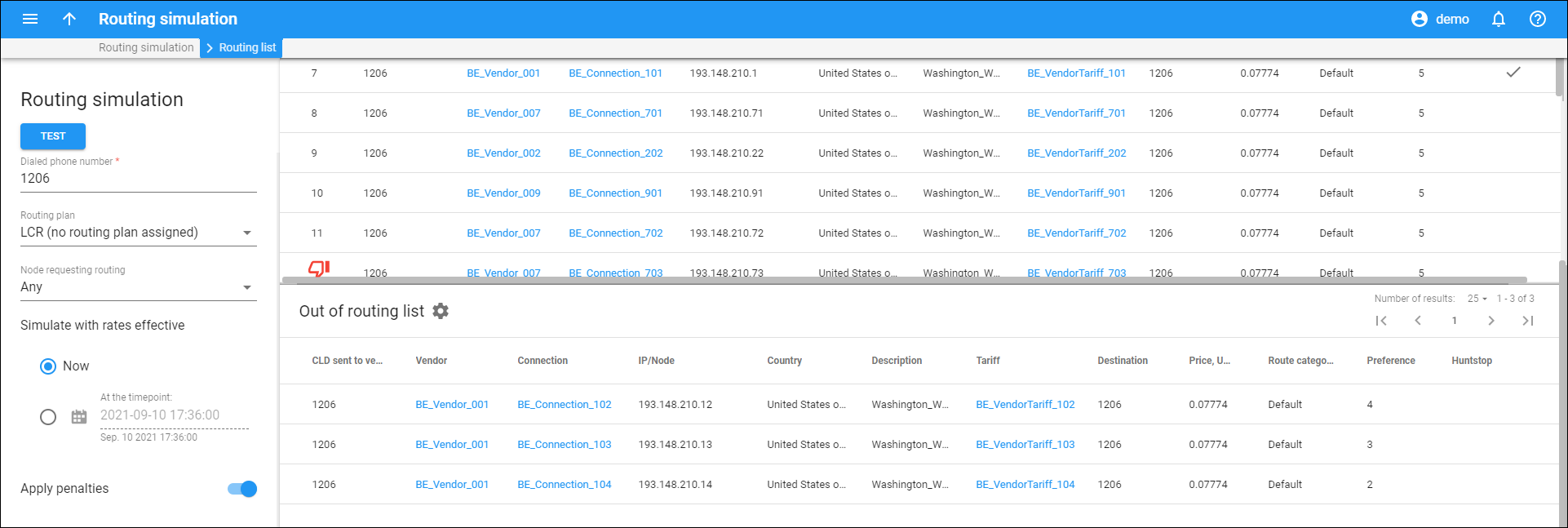The Routing list panel displays the list of routes that matches your routing simulation parameters.
The routes on the Routing list panel are tried according to their position in the list.
The routes that are ignored, e.g., due to the huntstop, are displayed on the Out of routing list panel below.
Each entry in the routing list consists of:
-
# — sequential number that shows the route order. The routes from the top of the list will be tried first. Thumb down
in this column indicates that the adaptive routing penalties are currently applied to this route.
-
CLD sent to vendor — translated called station ID (DNIS), as it will be sent to the vendor using this route.
-
Vendor — сall terminating vendor.
-
Connection — name of the vendor connection. Click the connection name to open the connection details.
-
IP/Node — the node (or remote gateway IP) where the call will be routed.
-
Country — the country the tested destination belongs to.
-
Description — destination description.
-
Tariff — name of the vendor tariff used to bill this call. Click the tariff name to open the tariff details.
-
Destination — matching destination from the tariff.
-
Price — next interval price for the specific destination (per minute).
-
Route category — route category, e.g., “Premium,” “Cheap,” specified in the corresponding rate.
-
Preference — routing priority specified in the corresponding rate.
-
Huntstop — Check mark
indicates that this route has huntstop enabled. This signals that the routes with a lower route category or preference will be ignored (check the Out of routing list below to see the ignored routes).
See the Call routing chapter in the PortaBilling Administrator Guide for more info on routing parameters.
Out of routing list
The Out of routing list panel displays the list of routes that are ignored, e.g., due to the huntstop.
Each entry in the “out of routing” list consists of:
-
CLD sent to vendor — translated called station ID (DNIS), as it will be sent to the vendor using this route.
-
Vendor — сall terminating vendor.
-
Connection — name of the vendor connection. Click the connection name to open the connection details.
-
IP/Node — the node (or remote gateway IP) where the call will be routed.
-
Country — the country the tested destination belongs to.
-
Description — destination description.
-
Tariff — name of the vendor tariff used to bill this call. Click the tariff name to open the tariff page.
-
Destination — matching destination from the tariff.
-
Price — next interval price for the specific destination (per minute).
-
Route category — route category, e.g., “Premium,” “Cheap,” specified in the corresponding rate.
-
Preference — routing priority specified in the corresponding rate.
-
Huntstop — Check mark
indicates that this route has huntstop enabled.




